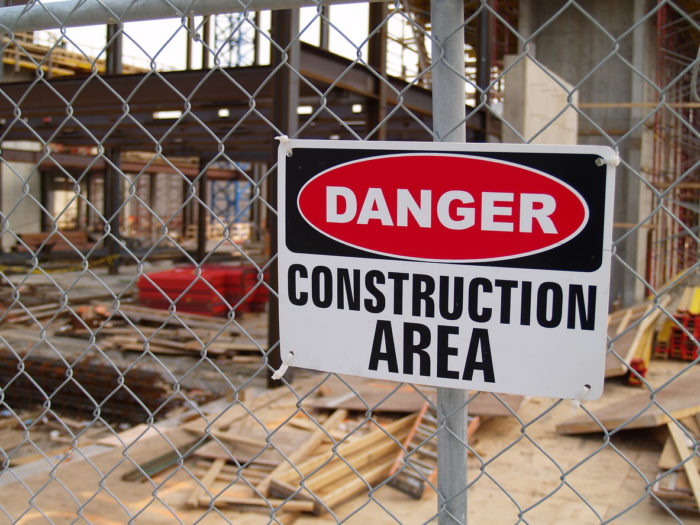Construction Sites — Hazards to the Public
Construction sites abound not only in South Florida but also across the state and throughout the country. Residential communities are being built and so are shopping plazas to serve them. High-rise commercial structures are changing skylines. From car dealerships to luxury resorts, development is everywhere.
The industry does its due diligence in securing construction sites with concrete barricades, orange cones or even yellow crime-scene tape in an effort to alert the public to ground-under-repair situations. Still, the risk of serious injury exists.
ConstructConnect reports that nearly 800 pedestrians, on average, are injured annually after being hit by vehicles on construction sites, and that statistic does not include injuries related to tripping and falling or being struck by an object or a piece of equipment. The Federal Highway Administration reports that upward of 96,000 vehicular accidents occur on construction sites annually, 26 percent of which result in injuries. The message is clear: Anyone walking by or driving past a construction site should take caution. Here are some common examples of the hazards construction sites pose to the public:
Scaffolding. Construction sites often require workers to perform at high heights using mobile elevating work platforms, or scaffolding. While it is true that scaffolding sometimes is set up in confined areas inaccessible to the public, sometimes it is not and is set up over a sidewalk or a populated area. Avoid the sidewalk or the populated area and take another route. Look for dangers such as tools or objects that could accidently topple from the edge of the platform.
“Be aware of your surroundings,” ConsumerSafety.org states. “Do not try to climb up or sit on scaffolding. Look for signs that show where work zones start or stop, or have limited access. If you’re involved in a scaffolding accident, get legal help by seeking out lawyers that specialize in construction accidents.”
Another tip is to listen to workers and heed their warnings.
“Construction workers use a variety of signals, flags and signage to indicate work-in-progress, dangerous zones or changes to traffic patterns,” ConsumerSafety.org states. “Oftentimes, pedestrians or motor vehiclists can become distracted and not notice the change in speed limit, flag person or restricted area sign, causing them to put themselves and others in danger.”
Abandoned construction sites. Inclement weather, a shortage of materials, financial problems or simple lunch breaks will leave construction sites unattended and unsupervised. It is the public’s responsibility to recognize the hazard and stay away. Children should be told never to play around construction sites because they could get hurt. The public is not equipped with the same proper protective gear that workers are and have not been trained. If someone is seen entering an abandoned construction site, it should be reported to the proper authorities.
“With all these hazards in mind, what can you do to help ensure your own safety, as well as that of the workers?” ConsumerSafety.org asks. “Awareness when driving: If you’re a commuter, check your local news or radio station to be aware of any blocked-off roadways or routes affected by construction. Pay attention to work speed zones, and look for signs showing that a flag person may be ahead, a new traffic pattern is about to occur, lanes are merging or a stop sign / traffic light has been put in place.”
A best practice for both pedestrians and motorists is to be on the lookout for construction sites so the worst does not happen. The worst happened to a 91-year-old woman who was injured by a fence that fell from a construction site and knocked her down. She suffered a broken hip and shoulder. The worst happened to an 18-year-old student riding his bicycle next to a construction site on campus who collided with a dump truck. He lost his right leg, and his pelvis and spine were damaged. The worst happened to a 28-year-old man who fell 30 feet into a hole on a construction site. He broke his back.
“Each of these stories is different, but demonstrates some of the ways that members of the public can be injured by mishaps at construction sites,” according to Creative Safety Publishing, which provides books and guides about safety. “In the case of Major, a hole wasn’t properly guarded or stabilized.”
Mark Major, the 28-year-old man, turned his tragedy into triumph by inventing an iPhone game that award points to players for navigating a cartoon version of him down a hole – hitting the fewest number of objects along the way. He did it to share his experience with others and make them aware that such an accident can happen to anyone.
Share This



